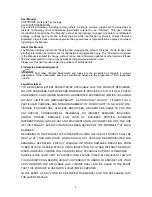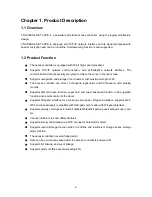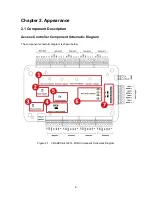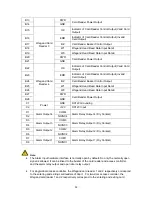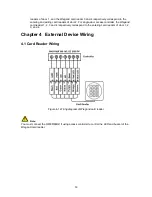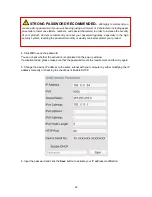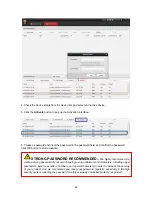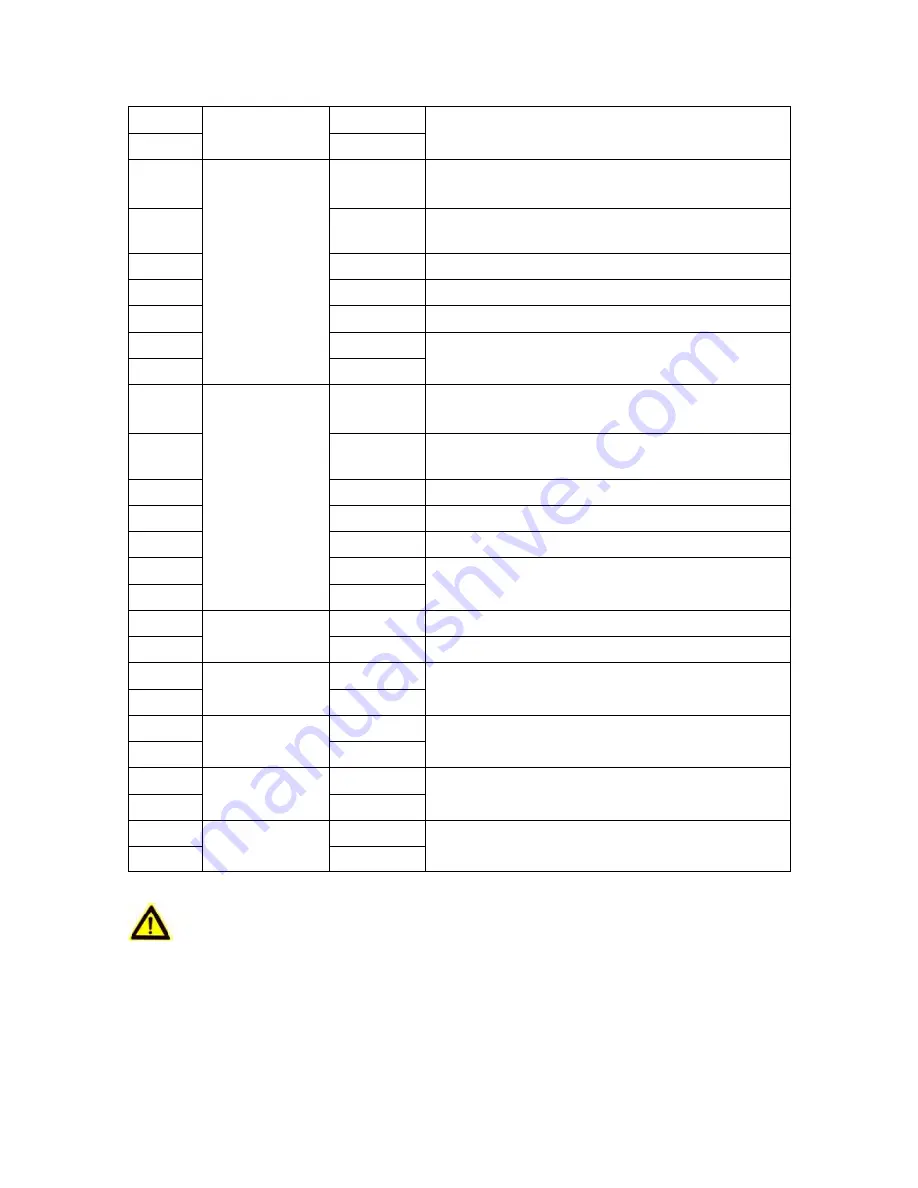
12
B13
PWR
Card Reader Power Output
B14
GND
B15
Wiegand Card
Reader 3
OK
Indicator of Card Reader Control Output (Valid Card
Output)
B16
ERR
Indicator of Card Reader Control Output (Invalid
Card Output)
B17
BZ
Card Reader Buzzer Control Output
B18
W1
Wiegand Head Read Data Input Data1
B19
W0
Wiegand Head Read Data Input Data0
B20
PWR
Card Reader Power Output
B21
GND
B22
Wiegand Card
Reader 4
OK
Indicator of Card Reader Control Output (Valid Card
Output)
B23
ERR
Indicator of Card Reader Control Output (Invalid
Card Output)
B24
BZ
Card Reader Buzzer Control Output
B25
W1
Wiegand Head Read Data Input Data1
B26
W0
Wiegand Head Read Data Input Data0
B27
PWR
Card Reader Power Output
B28
GND
C1
Power
GND
DC12V Grounding
C2
+12V
DC12V Input
D1
Alarm Output 4
COM4
Alarm Relay Output 4 (Dry Contact)
D2
NO/NC4
D3
Alarm Output 3
COM3
Alarm Relay Output 3 (Dry Contact)
D4
NO/NC3
D5
Alarm Output 2
COM2
Alarm Relay Output 2 (Dry Contact)
D6
NO/NC2
D7
Alarm Output 1
COM1
Alarm Relay Output 1 (Dry Contact)
D8
NO/NC1
Note:
The Alarm input hardware interface is normally open by default. So only the normally open
signal is allowed. It can be linked to the buzzer of the card reader and access controller,
and the alarm relay output and open door relay output.
For single-door access controller, the Wiegand card reader 1 and 2 respectively correspond
to the entering and exiting card readers of door 1. For two-door access controller, the
Wiegand card reader 1 and 2 respectively correspond to the entering and exiting card


